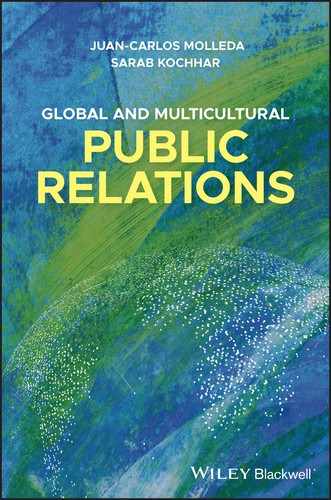Book Description
An overview of the practice of strategic global and multicultural public relations in various sectors
Global and Multicultural Public Relations offers students an expert overview of specific public relations practices, focused on strategic analyses of actual case studies and real-world examples. Emphasizing practice rather than theory, this valuable resource explores innovative communication programs that are designed to address culturally-diverse communities worldwide. The five-step strategic public relations process—formative research, planning, implementation, evaluation, and stewardship—is extensively examined and applied to a variety of scenarios, helping students understand the realty of modern public relations practice.
All aspects of public relations practice, including media relations, government relations, employee communications, and shareholder relations are covered to help students gain solid foundational knowledge. Broad in scope, this textbook identifies and describes the strategy formulation and implementation process in private, government, non-profit, and various other sectors.
Academic and trade articles, book chapters, original case studies, and new primary research offer students a realistic and sophisticated approach to global public relations. Figures, tables, photographs, and charts illustrate each topic, while highlighted learning objectives and key points, discussion questions, and framed sections on ethical considerations and best practices strengthen student comprehension.
- Employs a real-world approach to public relations principles, practices, and strategies
- Focuses on global public relations rather than outdated nation-centered models
- Fills a gap in current literature on multinational and multicultural public relations
- Explains the public relations strategies that are best suited for each sector
- Includes summary sections that contain suggested readings and supplemental online links
Designed for upper-level undergraduate and graduate students, Global and Multicultural Public Relations is an ideal textbook for courses in international public relations, global communication, public relations management, and multinational management, as well as business, political sciences, and public administration.
